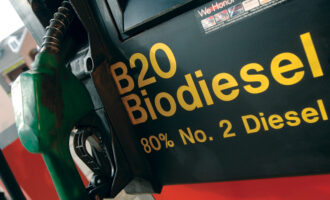Chevron Lubricants to expand ISOCLEAN to Mexico and Canada
By Alison Gaines
“Particle contamination is the number one cause of lube-related failure,” said Jason Gerig, ISOCLEAN Coordinator at Chevron Lubricants. “With new equipment, it has become even more of a focus,” he added.
Chevron has been operating its ISOCLEAN program for the past 12 years, focusing on cleaning customers’ machinery onsite. In 2015, the company added another component to the program, ISOCLEAN Certified Lubricants. Gerig said that through cleaning customers’ machinery, the company learned that getting clean lubricant into the machinery in the first place presents a main challenge for customers.
More and more, original equipment manufacturers (OEMs) have been developing their own specifications, and each typically has its own fluid cleanliness requirement. Yet, “for OEMs, there really hasn’t been a nationwide solution out there for certified clean lubricants,” Gerig said. The Certified Lubricants program is, in a way, a response to this complex situation, he explained.
 The lubricants are certified before they reach the customer. “The nice thing about our program is that we can customise it” according to each OEM’s individual cleanliness requirements. Chevron’s network of certified lubricant marketers is trained for this. “We’ve really been trying to develop our network over the past year,” he said.
The lubricants are certified before they reach the customer. “The nice thing about our program is that we can customise it” according to each OEM’s individual cleanliness requirements. Chevron’s network of certified lubricant marketers is trained for this. “We’ve really been trying to develop our network over the past year,” he said.
Anything with a hydraulic, gearbox, or circulating system, said Gerig, needs particle contamination control and probably has fluid cleanliness requirements. It’s not just what people traditionally think of when they think of filtering oil in industrial equipment; it spans everything from agriculture to mining to waste hauling.
The name ISOCLEAN refers to the International Standardization Organization’s (ISO) cleanliness requirements, specifically ISO4406:1999, which is the “method for coding the level of contamination by solid particles.” There are many test methods for particle counting. Gerig said that ISOCLEAN Certified Lubricants uses three test methods, because there can be variances between them. They use a patch test, an in-line laser particle counter and a LaserNet fines machine.
“We’re at the scale now where we’re starting to target not just local and regional customers, but national customers as well,” Gerig shared. In the first half of 2016, ISOCLEAN will be available in Mexico and Canada.
ISOCLEAN customers have the overall goal of maximising equipment life and increasing productivity. In the midst of this, particle contamination has been a stumbling block, so having a certified lubricant is the first step to extending machine life, Gerig added.







